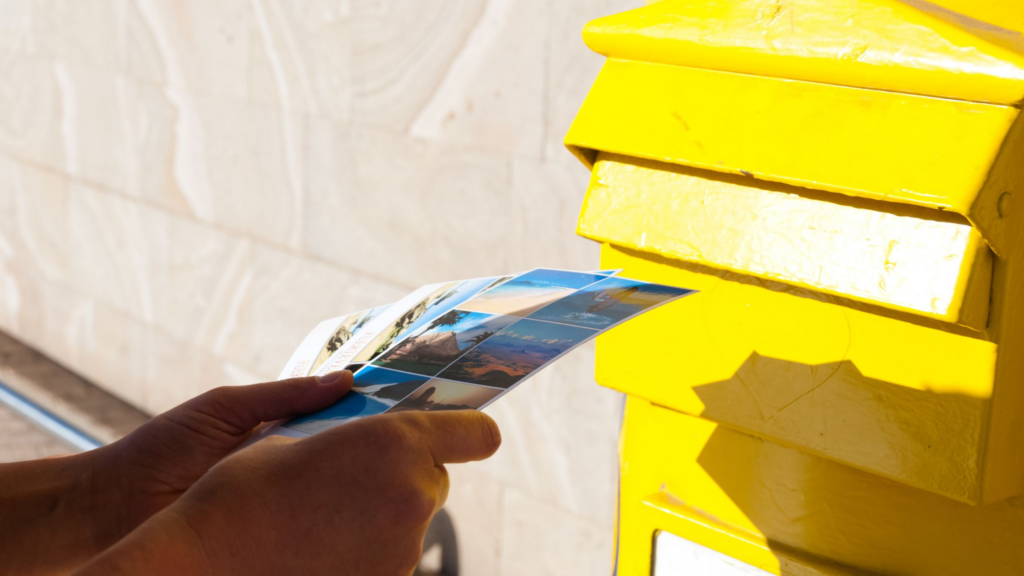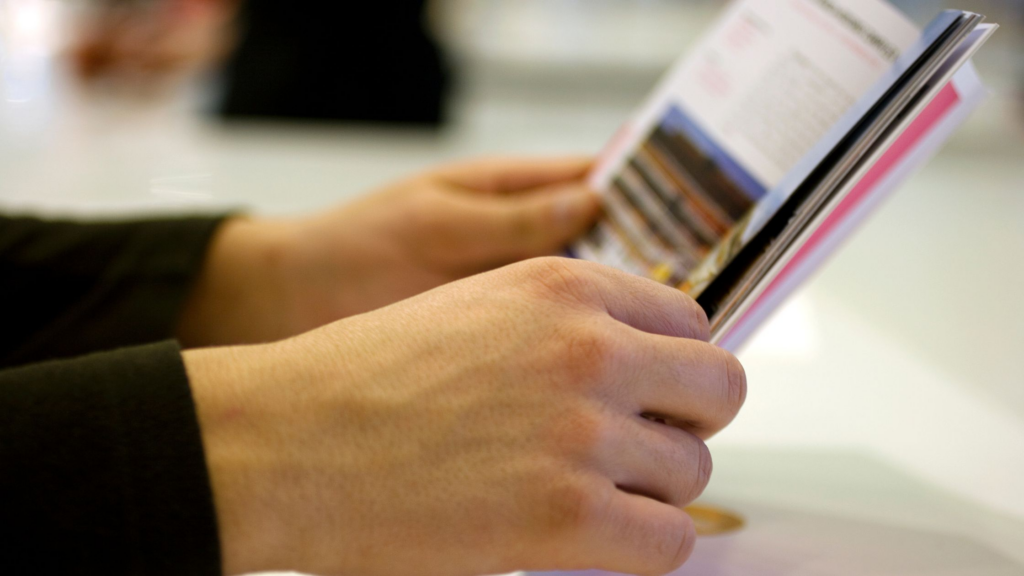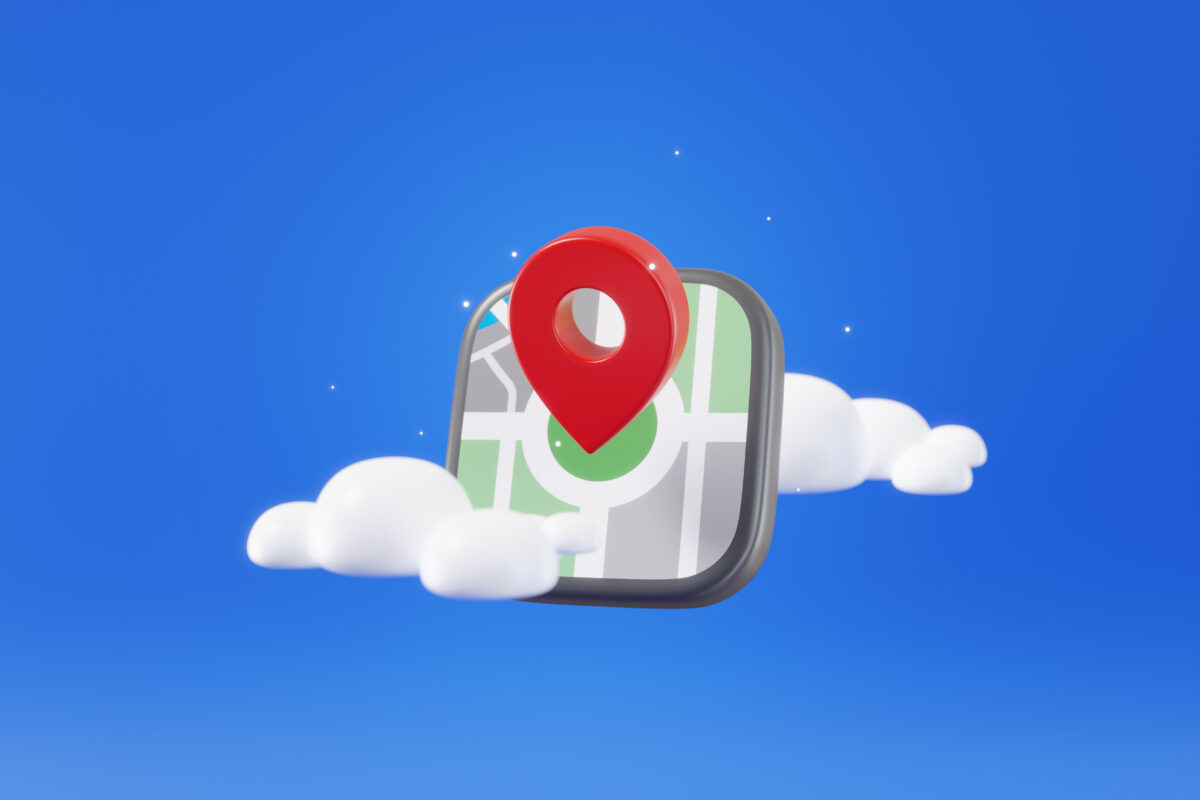
Comment augmenter votre trafic sur le web grâce à des stratégies de marketing hors ligne ?
If you wish to grow your business, the golden rule of marketing is to increase website traffic. We would naturally assume online marketing strategies are the way – perhaps, the only way. But surprisingly, we find many top-line marketers successfully leverage traditional stratégies de marketing hors ligne to drive web traffic.
Traditional stratégies de marketing hors ligne include television, radio, print, and outdoor ads as well as events, direct mail, door-to-door, and hand-to-hand campaigns. We still watch television, listen to the radio, and drive past billboards, but it’s the old-fashioned direct mail, flyers, and letterbox drops that are driving web traffic. Sounds odd, doesn’t it, especially when COVID-19 has forced most businesses to shift online?
How can the good old direct mail drive online purchases when almost everyone communicates through email? Aren’t online marketing strategies like blogs and social media posts the proven way to boost web traffic? Yes, they get us the numbers, but not necessarily high-quality leads. However, data-driven offline campaigns can target potential customers who fulfill our marketing goals.
Let’s begin by understanding why web traffic tops every marketeer’s list of goals, be it an online business or a brick-and-mortar store.
The importance of web traffic
We know people don’t just click on a website or walk into a store and buy a product. A purchase happens only after the customer has made repeated website visits and done their homework on the company and the product. We also need to periodically nudge repeat customers to maintain their interest and loyalty. The more visitors to a site, the more opportunities to generate leads and build relationships with future customers.
Increasing the volume of web traffic is the only first step. Our goal should be to get the walk-ins to buy the car and not just test-drive it. The next step is conversion, be it signing up for the newsletter, asking for a quote, or buying the product. The higher the conversion rate, the less the number of new visitors needed to meet our marketing goals.
So let’s understand how data-driven stratégies de marketing hors ligne can drive web traffic.
Offline marketing strategies for promoting your website

Traditional stratégies de marketing hors ligne involve face-to-face interaction: cold calls, flyers, trade shows, events, or direct mail. While personal touch can clinch a deal, logistics do not permit scaling up a business or identifying and focussing on the desired target audience. In the days gone by, we would distribute flyers randomly and hope that they would reach the right audience, but real-time GPS technology has changed that. Now, we can track our target, select our distribution times, and follow our campaign in real-time on an interactive dashboard.
The trick is to connect the digital and the physical seamlessly. For example, we can connect the recipient to our website with a QR code on our leaflet. So, the simple strategies are:
Put the website address on all offline marketing materials
Be it giveaways, flyers, or direct mailers, add the website address on every piece of communication. If prospects need to know more, they will quickly go online, increasing our search traffic. While using the giveaways, they may realize they need our product or service. They can log on to the site straight away, thanks to the handy address on the marketing material. It’s a good idea to choose giveaways like notepads, t-shirts, and shopping bags where we can insert the website address easily.
Almost everyone today is a social media user. So, we must include social media links too in the offline marketing material. Frequent campaign updates will strengthen our connection with consumers and help convert them. And a personal connection via a personalized URL is even better.
PURL technology: The gamechanger in direct mail campaigns
We have a new avatar of the direct mail specifically designed to drive traffic back online. That gamechanger is a PURL.
A PURL is a personalized URL that leads the prospect to a customized webpage. While a personalized email or direct mailer is not uncommon, a personalized web page will make the consumer sit up and take notice of our brand. We can create a PURL for each member of our direct mailing list. When they click on a PURL, personalized content, including images, will automatically upload to the microsite.
PURLs are not just a ‘smart’ tactic to attract consumer attention. They also help us track their activity on their personalized landing page, understand their behavior, and personalize engagement. When someone is browsing their PURL, we get an instant alert: a superb opportunity to follow up with a chat, email, or phone call. And what’s more, by creating different URLs for different marketing strategies, we can assess which is more effective.

Tips for driving website traffic from direct mailers
While a PURL creates a channel to our website, often, it’s not enough to lure our prospects to go to the PURL link in our direct mailer. We need to give people a powerful reason to visit our website.
Here are some tips that can efficiently drive traffic from the direct mailer to the website.
1. Make a compelling offer

We need to include an incentive in the direct mailer. It could be a freebie, coupon, or even a white paper. Since the idea is to increase website traffic, we need to ask the prospect to register on the website to claim the incentive, like Uber does in its referral program.
While everyone loves a discount, a financial benefit is not the only compelling factor. Another great idea is to create an exclusive URL for specific groups such as teachers, fitness trainers, or any other group relevant to our business. People will happily sign up to connect with others with similar interests.
Yet another great way to generate web traffic is to create meaningful content in our direct mail campaign. A memorable example is the 2015 ‘Together Sweater’ Campaign from Target, the big-box US department store. Designed to fit multiple people, their creative agency sent ‘The Together Sweater’ to celebrities who paired up to promote the message of togetherness and shared the joy online. The campaign created a buzz around the collaboration between Target and Toms.
To drive traffic back online, we must connect the touch points in both worlds – the physical and the digital – and then find creative ways to communicate the message. But whatever the content, we need to ensure the prospect’s online journey is smooth.
2. Keep the URLs short and simple
- Create a generic, easy-to-type campaign URL for more leads
People can misspell even the simplest PURL in the world. Or, they may be wary of clicking on a personal URL. Many remove their name to check the domain. A generic version of the personalized URL allows anyone to enter the campaign domain, including those who misspell their PURLs. It also helps track campaign leads. The campaign page could also be used on the main website, social media pages, and other communication, making for a cohesive campaign.
- Use the recipient’s name in the PURLs
People love seeing their names. So, it’s best to use the recipient’s name in the campaign PURLs. It is best to avoid any sort of code at the end of it, for example, peter7652. Also, remember to put the prospect’s name before the domain name. For example, when creating a PURL for Marie John, it’s better to use www.mariejohn.dealernet.com instead of ww.dealernet.com/directmai/marie.john.
- Use a vanity URL
A vanity URL is a short customized link. Also known as a branded link, it describes the campaign or the call to action. For example, it could be http://peterjohn.save on fuel.biz instead of http://peterjohn.sdg objectifs.fordmotors.com. Un vanity URL est facile à mettre en place, et les enregistrements de domaine existants ne doivent pas être modifiés.
3. Personalize your copy
Qu'il s'agisse d'une page d'atterrissage PURL ou d'un contenu imprimé sur le courrier, l'impression de données variables (IDV) personnalise toute la communication. Il n'y a pas de meilleur moyen d'attirer l'attention du consommateur et de l'inciter à agir.
4. Include a clear call to action
Acheter maintenant" ou "Télécharger maintenant" sont des exemples typiques d'appels à l'action (AAE) clairs. Mais un appel à l'action plus long permet de préciser l'objectif. Par exemple, "partagez votre histoire aujourd'hui et influencez de nombreuses vies". L'appel à l'action est le point d'orgue d'une campagne de marketing. Il doit enthousiasmer le prospect et lui donner des instructions claires, par exemple : "Achetez aujourd'hui et gagnez votre cadeau ! Offre valable jusqu'à épuisement des stocks". Tirer parti de l'instabilité du prospect n'est pas une nouvelle tactique de marketing.
5. Specify a deadline for your offer
Une date limite permet toujours d'obtenir une réponse de la part des hésitants. Un exemple typique est "Rush Now. Offre limitée dans le temps. La vente se termine le 31 décembre."
6. Build a ‘campaign-focussed’ landing page

Des études montrent que les gens réagissent aux liens dans le publipostage, en particulier à un PURL. La page d'atterrissage est l'endroit où les accrocher - les éloigner des moteurs de recherche et de la concurrence. Cependant, il est important de se rappeler qu'une page d'atterrissage et une page d'accueil ne sont pas identiques.
Une page d'atterrissage est un microsite temporaire conçu pour un objectif spécifique, comme l'inscription à une lettre d'information ou à un webinaire. Un lien dans un courriel ou un clic sur une annonce Google conduit le prospect à la page d'atterrissage. Il serait utile de maintenir une continuité visuelle et de contenu avec la source. Il est préférable d'éviter la présence d'une barre de navigation sur la page d'atterrissage, de peur que le prospect ne quitte la page en cliquant dessus.
Offline marketing strategies: Proving a case

Il y a suffisamment d'exemples concrets pour nous montrer que l'ancien système d'information et de communication de l'Union européenne n'est pas une panacée. stratégies de marketing hors ligne peuvent être efficaces, même aujourd'hui, pour créer une notoriété de la marque, une mémorisation et d'autres objectifs de marketing.
Amazon et d'autres détaillants en ligne utilisent des catalogues imprimés pour promouvoir leurs produits et leurs offres. Pourquoi les consommateurs répondent-ils encore à un message de publipostage ? Parce qu'il ne les dérange pas lorsqu'ils sont au travail ou en société. Il arrive tranquillement à leur domicile lorsque d'autres choses ne sollicitent pas leur attention. Et bien sûr, ils ont un accès rapide à l'internet à la maison. Alors, si notre offre est attrayante, pourquoi ne se rendraient-ils pas sur notre site de commerce électronique pour acheter ?
Uber Eats est une autre marque internationale qui a utilisé le flyering avec succès. Son objectif était d'être leader sur un marché très concurrentiel : la livraison de nourriture. Elle devait acquérir des clients rapidement et de manière efficace. En utilisant des solutions "online to offline" en Australie, en Nouvelle-Zélande, au Royaume-Uni et en France, Uber Eats livre désormais dans 500 villes et est leader sur ces marchés. Lire l'étude de cas Uber Eats ici.
Getaround, une société de location de voitures, est une autre marque qui a combiné le marketing en ligne avec une campagne de porte-à-porte pour soutenir son lancement au Royaume-Uni - sauf qu'il ne s'agissait pas de la porte d'une maison, mais de celle d'une voiture. La campagne visait à inciter les propriétaires de voitures à louer leur véhicule. L'équipe a conçu un accroche-portes et a touché plus de 2 millions de propriétaires de voitures sur 200 sites pendant huit semaines. En plus de l'accroche, un cadeau de 200 euros était offert lors de l'inscription sur le site web. La campagne a permis de réduire considérablement le coût par acquisition (CPA) de l'organisation de 70%. Lire l'étude de cas Getaround ici.

Takeaway: An online-offline marketing strategy
Les stratégies de marketing en ligne et hors ligne fonctionnent mieux en tandem. Il faut donc sortir du cloisonnement entre le marketing en ligne et le marketing hors ligne. Grâce à la technologie, le marketing hors ligne n'est plus la règle d'or. Nous pouvons étendre notre activité à l'échelle nationale et internationale, mesurer les taux d'engagement et de conversion, et bien plus encore. C'est pourquoi nous devons utiliser des stratégies de marketing hors ligne de manière extensive et efficace afin de générer du trafic vers nos sites web.
Le moyen d'y parvenir est d'établir des relations avec les consommateurs par le biais d'informations fondées sur des données. stratégies de marketing hors ligne et les diriger ensuite vers l'univers numérique de la marque.
Alors, tout en travaillant sur notre prochaine campagne de médias sociaux, n'oublions pas les opportunités qui s'offrent à nous. stratégies de marketing hors ligne fournir. Un publipostage ou un cadeau promotionnel n'obtiendra peut-être pas de "likes" ni de "shares", mais il peut inciter nos futurs clients à nous rechercher en ligne.




